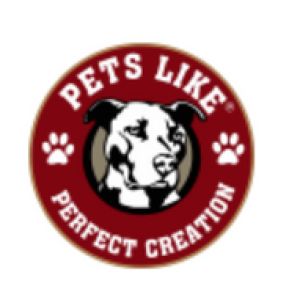How to Make a Dog Polyester Collar LastPosted by Petslike on August 18th, 2022 You've probably seen a variety of designs. You've probably also heard about personalized collars, which allow you to put your dog's name on the collar and eliminate the need to purchase an ID tag for your dog. Dog Polyester collars are made of nylon, are adjustable and usually come in small, medium, and large sizes. Before you purchase one, you should measure your dog's neck size to ensure that it fits properly. Size chartBefore buying a polyester dog collar, you should know your pooch's neck size. To get an accurate size, measure your dog's neck circumference using a flexible tape measure. Then, wrap a piece of string around the thickest part of the dog's neck and mark it with a ruler. This measurement should be your base size. This way, you can compare the collar size to the one you've chosen to ensure it fits. Generally, a medium-sized collar will have a 3/4" buckle, a D-ring, and a triglide. For males, you may have to shorten the groin cutout. Be sure to read the size chart provided by the collar manufacturer before purchasing. Then, cut off the excess fabric. The collar should be as snug as you want it. If it is tight or loose, you can trim it afterwards. MaterialsThere are many different materials that are used in dog collars. These materials range from neoprene to leather to polyester. Both are durable and strong, so they are great options if you're looking for a collar for your dog. You can also consider biothane dog collars, which are made of polyester webbing that's coated with non-toxic substances. While biothane collars cost less than standard nylon, they also last longer and are more comfortable for your dog. Nylon-Polyester blends are another option. They offer high strength, resistance to mildew, and low water absorption. Another advantage of these materials is that they are adjustable and can withstand a great deal of use. In addition, they are also resistant to weather and high abrasion, making them an excellent choice for dogs who go outdoors frequently. They also look great and can protect your dog's collar from the elements. DurabilityOne of the best ways to make a dog polyester collar last is to rotate the style of the collar every now and then. This will not only keep your dog's neck area comfortable, but will also ensure proper fit. A dog collar that is left on all the time will likely wear out over time, and can even result in bald patches and hair breakage. In addition, collars can cause an unpleasant odour in your dog. This is due to moisture build-up, which can cause fungal and yeast infections. Nylon is another common material used for dog collars, and it is often soft and durable. However, if your dog is sensitive to fabric, he or she might end up rubbing against the collar and developing an allergy. However, cotton collars are more comfortable than nylon, and they do not contain chemicals. They are also lighter in weight, and you can wash them yourself when they get droopy. And if your dog has a skin sensitivity to polyester, cotton collars are an excellent choice. SafetyWhile the appearance of your dog's collar is important, you should pay special attention to the safety of your pet's dog polyester neck collar. This collar should not be too tight or too loose. Either extreme poses a choking hazard, and can embed in your dog's flesh. Worse, a loose collar can slip off your dog's neck, and can become entangled in something your pet might try to get at. While it may seem like a good idea to purchase the most expensive collar on the market, you should remember that a lower price does not necessarily mean higher safety. The golden rule of dog collar safety is that a fastener should be large enough to allow two fingers to fit underneath the collar. The buckle or snap on your dog's collar should be metal and preferably a metal one. Also, if your dog likes to make mischief while walking, you may want to get a breakaway fastener for your pet's safety. CostThe cost of a dog polyester collar depends on its material, style, and features. It can be made of different materials, including nylon and synthetic rubber. Nylon and synthetic rubber are more durable and dries quickly after contact with water. Both materials are durable and comfortable, but neoprene collars are more expensive than other materials. They also tend to be bulkier. Choke chains are a popular option, but you should be wary of their odor factor, especially if your dog has an oily coat. Another option is a DIY project. Many pet owners are creating their own dog collars. While this can be fun, it's important to consider the safety of your dog before attempting to make one. A poorly made collar could lead to your dog getting an allergic reaction, rubbing against something it shouldn't, or even strangling it. This option should be reserved for DIY projects and small budgets. However, if you want to try your hand at making a dog polyester collar, here are some tips to keep in mind. Like it? Share it!More by this author |


